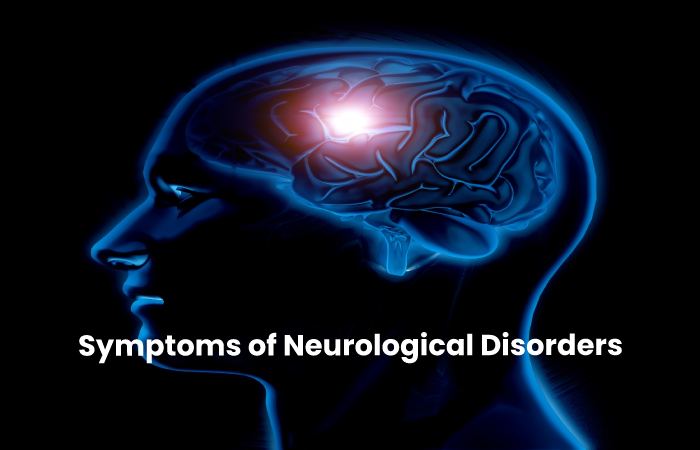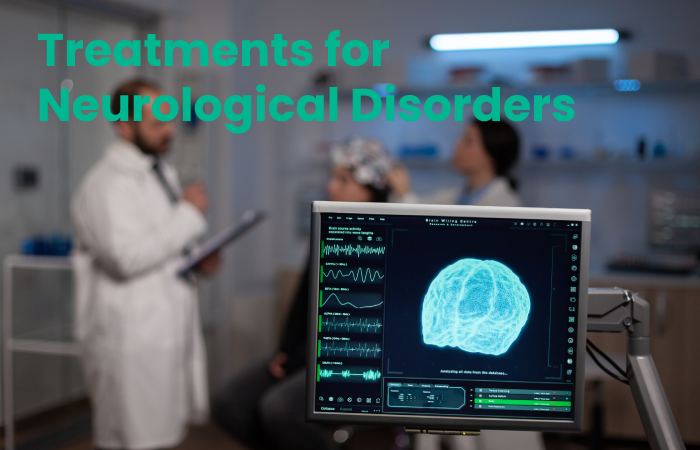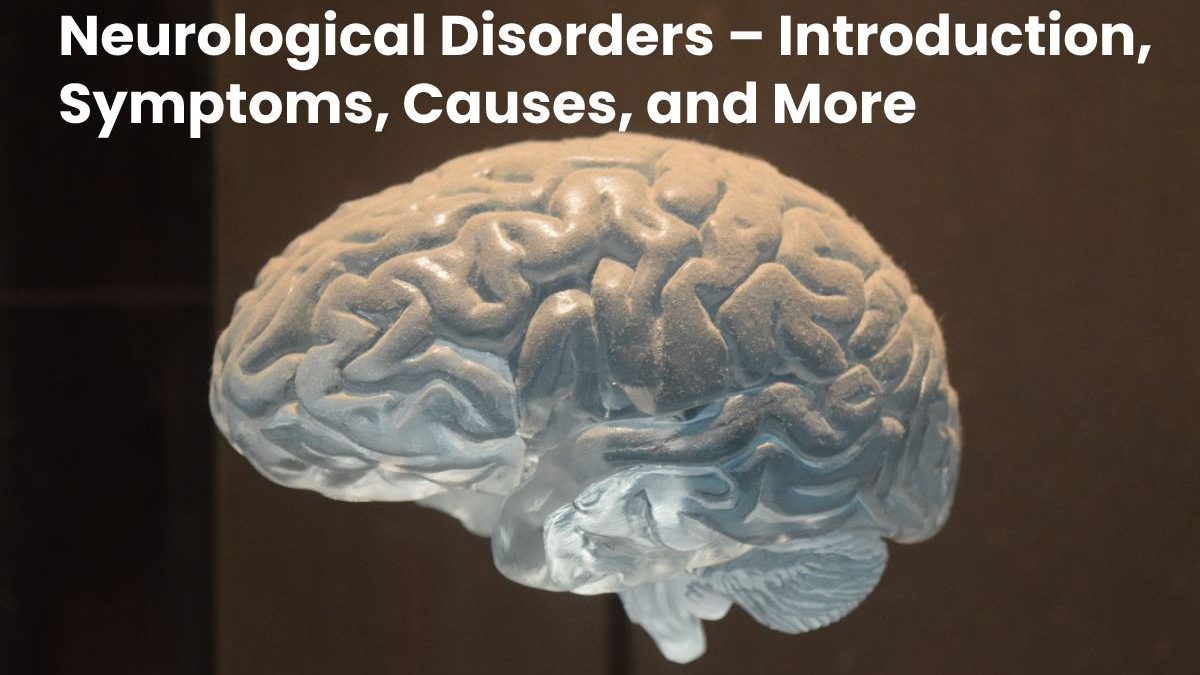Table of Contents
What are Neurological Disorders?
Neurological disorders affect some seven million Spaniards. These disorders are diseases of the central and peripheral nervous system, that is, of the brain, spinal cord, cranial and peripheral nerves, autonomic nervous system, nerve roots, neuromuscular junction, and muscles
There are More than 600 Neurological Diseases, Among Which are:
- Infections are due to defective genes, such as muscular dystrophy or Huntington’s disease.
- Degenerative diseases, such as Alzheimer’s or Parkinson’s.
- Diseases of the blood vessels that supply the brain, such as strokes.
- Due to problems in the nervous system development, such as spina bifida causes disease.
- Disorders – Due to brain or spinal cord injuries.
- Seizure disorders, such as epilepsy.
- Brain tumors due to cancer.
- Infections, such as meningitis.
Symptoms of Neurological Disorders

The symptoms of neurological disorders will depend on the specific disease. They can produce both an excess and a deficit of neuronal activity in any body system. Some of the symptoms that can identify are:
- Headache
- Loss of strength or numbness in an extremity
- dizziness
- Fainting and loss of consciousness
- Memory problems
- cognitive difficulties
- speech problems
- Eyesight problems
- Tremors, spasms, involuntary contractions
- Medical tests for neurological disorders
- Medical tests may vary depending on the patient’s condition. There are multiple tests to evaluate the state of the nervous system, which are more useful depending on what you want to inspect. It is worth noting the following:
- Electroencephalogram is especially useful in brain tumors or brain or spinal inflammation.
Cerebral Angiography
They are used to trace vascular irregularities in the brain. They can be obstructions in the blood vessels or stroke, among others.
Computed Tomography
Very effective in detecting epilepsy, brain tumors or cysts, brain damage due to injury, etc.
MRI
It reveals the doctor’s details of the organs, tissues, nerves, and bones
Lumbar Puncture
To obtain cerebrospinal fluid samples and thus check the existence of bleeding or cerebral hemorrhages.
What are the Causes of Neurological Disorders?
The causes are different depending on the disorder. The reasons for several neurological diseases are unknown, although the hereditary factor may be critical, as is the case with some degenerative diseases such as Alzheimer’s or Huntington’s disease.
Brain trauma or injury can also result from multiple disorders, such as Parkinson’s, brain hemorrhage, or epilepsy.
On the other hand, some disorders originate in the same organism, such as brain tumors.
Can it be Prevented?
Neurological disorders are difficult to prevent in several cases, primarily due to hereditary factors. In any case, there are several measures that we can follow to reduce the risk:
- Keep the brain and mind healthy, carrying out activities stimulating brain activity.
- Get some physical activity regularly.
- Avoid solitary confinement or social isolation through social and affective relationships.
- Have healthy lifestyle habits, avoiding the consumption of alcohol, tobacco, and drugs.
- Sleep a minimum of 8 hours a day.
- Have a balanced diet.
- Protect the brain and avoid brain injuries, using the necessary protection on the road or in risky activities.
- Avoid risk factors such as high blood pressure, high cholesterol, stress, exhaustion, obesity, diabetes, etc.
Treatments for Neurological Disorders

The goal of most neurological treatments is to palliate symptoms and, if possible, cure the patient.
There are numerous treatments for neurological disorders, which vary according to the pathology diagnosed. It is common for the primary treatment to be neurorehabilitation, whose objective is to restore, minimize or compensate for the functional deficits that the patient may have, always to the extent possible.
The treatments seek comprehensive neurological care to improve the quality of life of patients suffering from these disorders to have the most significant possible autonomy.
In all neurological disorders, early analysis is vital so that the specialist can establish the most suitable treatment in each case.
The Most Common Neurological Disorders
These are the fifteen most joint neurological disorders.
1. Strokes – Neurological Disorders
Although it is not a single disorder since it encompasses a set of possible problems, cardiovascular accidents are currently one of the three leading causes of death in the world. Depending on the affected area, these accidents can have a very diverse cause, course, and effects.
2. Alzheimer’s Disease – Neurological Disorders
The best-known dementia is also one of the most frequent neurological disorders. This disorder, Alzheimer’s, is insidious and progressive onset dementia that begins with recent memory loss and anomie (difficulty finding the names of things). This disorder evolves through three phases, progressively deteriorating all intellectual functions and autonomy.
3. Parkinson’s Disease
This disease is also one of the utmost frequent neurological disorders. At the neurological level, a degeneration of the nigrostriatal system has been observed, which leads to a deficit of the neurotransmitters dopamine and GABA in this system
4. Tension Headache
Headache is Known as one of the most common nervous system disorders worldwide, headache. Within the group of headaches, we find subtypes such as tension headache and cluster headache, migraine, and tension headache stand out.
5. Migraine
Migraine, primarily genetic, is caused by the release of inflammatory substances around the nerves and blood vessels in the head. They include moderate or intense headaches, hypertension, nausea, light and sound intolerance, and the pain aggravating with activity. It is usually a recurring condition throughout life.
Epilepsy
A brain disorder occurs when brain cells send the wrong signals. Within this disorder, there are grand mal and petit mal crises. The first is the best known, characterized by the presence of loss of consciousness followed by seizures, incontinence, tongue biting, and hallucinations. In the second, there are no seizures, characterized by a mental absence.
Brain Tumor
Brain tumors are also among the maximum common neurological disorders. They produce by some brain material’s uncontrolled and abnormal growth and might appear in neurons, glia, or meninges. While there is a broad classification of brain tumors according to the type of cell that produces them and their behavior, all of them are highly dangerous for the patient’s life, even tumors with benign behavior.
Conclusion
Neurological disorders are those pathologies located at any point of the nervous system, whether in the brain, spinal cord, or other nerves and nerve extensions, altering its proper working. The indications of these disorders can be very varied and can produce both a deficit and an excess of neuronal activity in any body system. The reasons depend on the disorder and may even be currently unknown.

